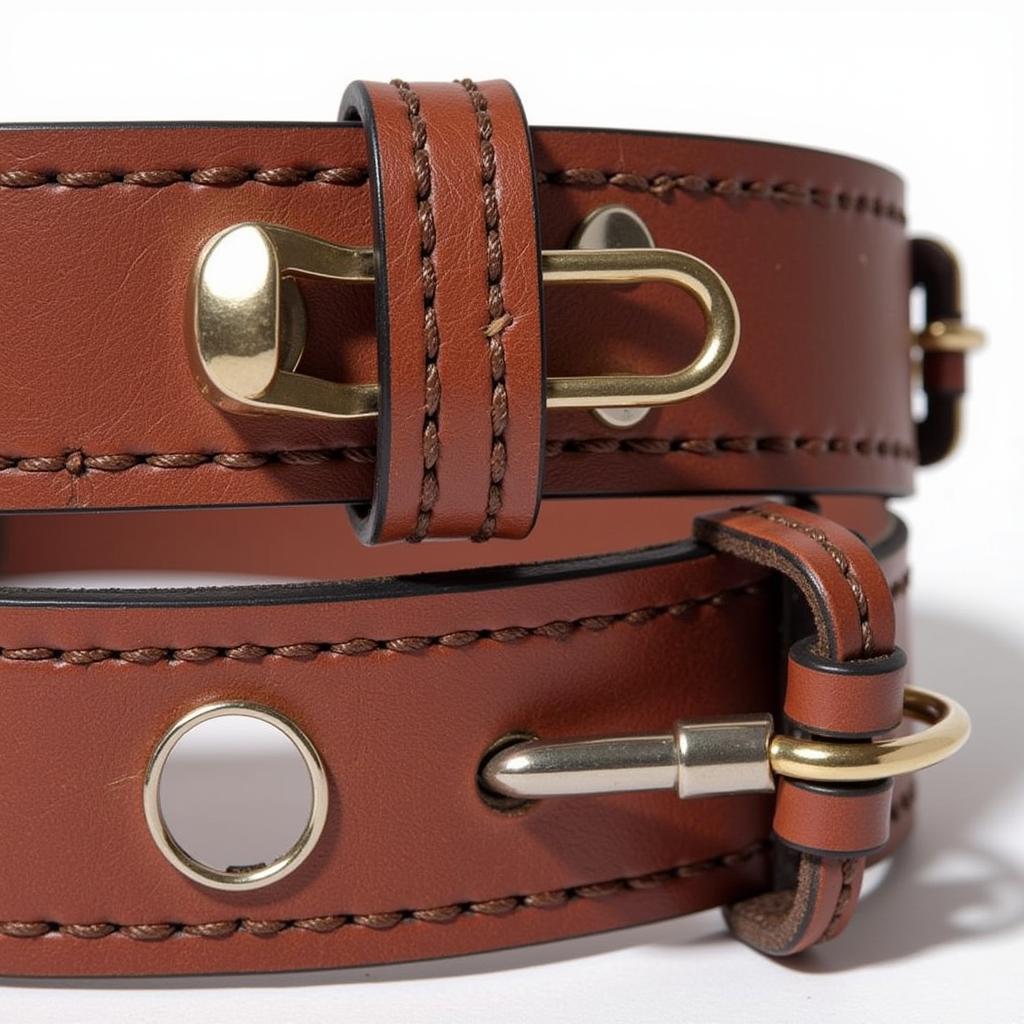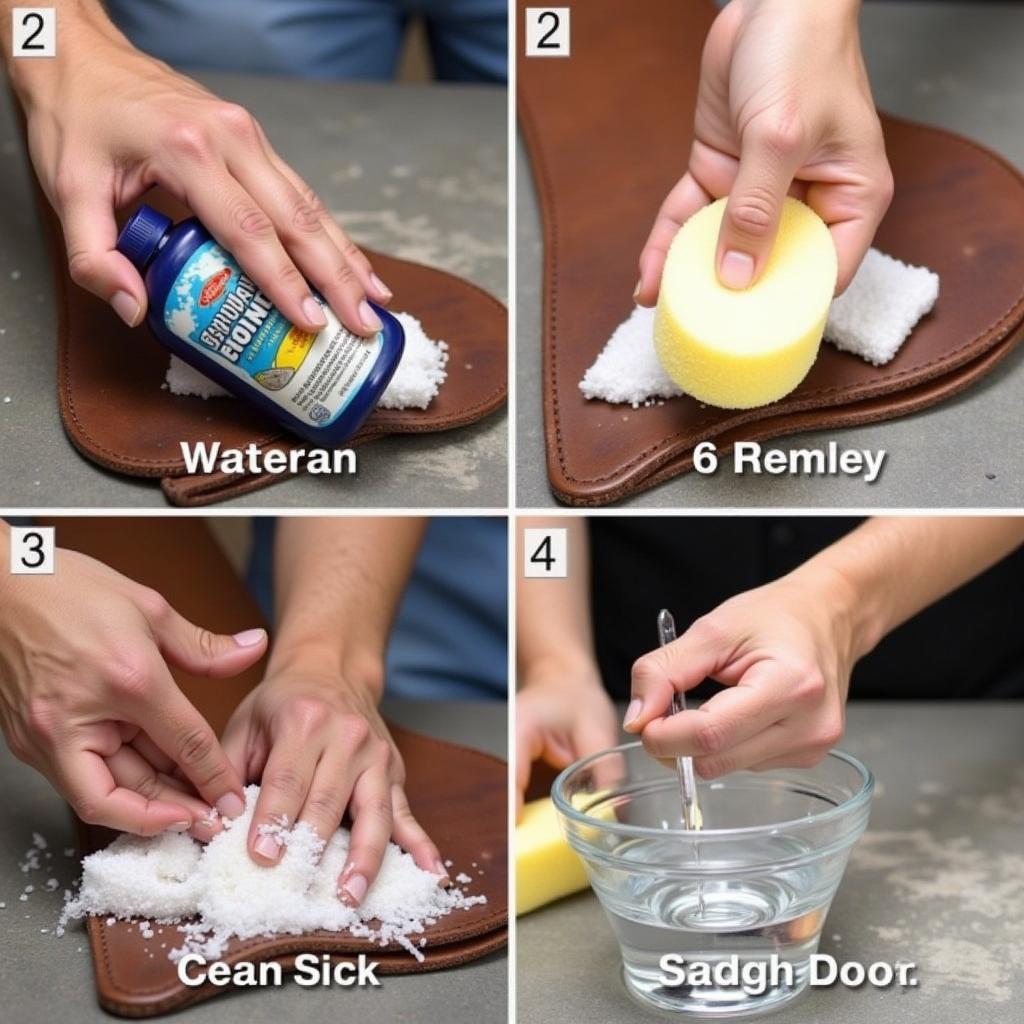A girth is a crucial piece of horse tack that secures the saddle to the horse, ensuring both rider and horse’s safety. Understanding how to choose, fit, and care for a girth is essential for any equestrian. This comprehensive guide covers everything you need to know about Girth Horse Tack, from different types and materials to proper fitting and maintenance.
Choosing the Right Girth Horse Tack for Your Horse
Selecting the right girth can significantly impact your horse’s comfort and performance. Consider these factors when choosing your horse’s girth:
- Horse’s conformation: A horse with a forward girth groove will require a different shape girth than one with a more traditional placement. For horses with sensitive skin, consider anatomical girths designed to distribute pressure more evenly.
- Discipline: Dressage girths are typically shorter and straighter, while jumping girths often feature a contoured shape and elastic ends for increased freedom of movement.
- Material: Leather girths are traditional and offer durability, while synthetic materials like neoprene and nylon are easier to clean and maintain. Consider purple horse tack if you are looking for stylish options.
- Budget: Girths range in price from budget-friendly synthetic options to high-end leather girths.
Different Types of Girth Horse Tack
Understanding the various types of girths available can help you make an informed decision:
- Dressage Girths: Designed for dressage saddles, these girths are usually shorter and straighter, offering a close contact feel.
- Jumping Girths: Often contoured and featuring elastic ends, jumping girths allow greater freedom of movement over fences.
- Long Girths: Used with saddles that don’t have billets, such as some Australian stock saddles.
- String Girths: Made from interwoven strings or cords, known for their breathability.
- Atherstone Girths: A traditional English girth made from a single piece of leather, offering excellent durability.
 Leather Girth Horse Tack Closeup
Leather Girth Horse Tack Closeup
How to Properly Fit a Girth
Proper girth fit is crucial for your horse’s comfort and well-being. An improperly fitted girth can cause pinching, rubbing, and discomfort, leading to performance issues and even injury.
- Position the saddle correctly: Ensure the saddle is placed correctly on the horse’s back, parts of a horse saddle resting comfortably without hindering the horse’s shoulder movement.
- Attach the girth: Start by fastening the girth loosely on both sides, gradually tightening until snug.
- Check for evenness: Make sure the girth is even on both sides, avoiding any twisting or uneven pressure.
- Two-finger rule: You should be able to fit two fingers between the girth and your horse’s elbow. This ensures the girth isn’t too tight.
Girth Care and Maintenance
Proper care and maintenance will extend the lifespan of your girth.
- Cleaning: Regularly clean your girth with saddle soap and water, removing sweat and dirt. For synthetic girths, you can often simply hose them off.
- Conditioning: Leather girths benefit from regular conditioning to keep the leather supple and prevent cracking.
- Storage: Store your girth in a cool, dry place, away from direct sunlight.
 Cleaning Horse Girth Tack
Cleaning Horse Girth Tack
What girth material is most durable? Leather is generally considered the most durable girth material.
Common Girth Problems and Solutions
- Girth Galls: Sores caused by friction from an ill-fitting or dirty girth. Solution: Ensure proper fit, cleanliness, and consider using a girth cover.
- Girth Slipping: Can be caused by a loose girth, incorrect saddle placement, or a slippery horse. Solution: Check saddle fit, tighten the girth appropriately, and consider a non-slip girth or pad.
- Girth Rubbing: Often caused by a girth that is too tight or has rough edges. Solution: Adjust the girth, check for any rough spots, and consider a different girth material or style.
“A well-fitting girth is essential for a happy horse,” says renowned equine expert Dr. Emily Carter. “It’s a small piece of equipment that plays a big role in their comfort and performance.”
 Different Types of Horse Girths
Different Types of Horse Girths
Conclusion
Choosing and fitting the correct girth horse tack is vital for both horse and rider. By understanding the different types of girths, proper fitting techniques, and maintenance procedures, you can ensure your horse’s comfort and well-being. Remember, investing in quality english horse tack is an investment in your horse’s performance and happiness.
FAQ
- How often should I clean my girth? Ideally, after each use.
- What is the best material for a girth? Leather and synthetic materials each have their benefits.
- How tight should a girth be? Snug enough to secure the saddle, but you should be able to fit two fingers between the girth and your horse’s elbow.
- Can I use a dressage girth for jumping? While possible, a jumping girth is generally recommended for its added freedom of movement.
- What should I do if my horse develops a girth gall? Consult a veterinarian and address the underlying cause of the gall.
- Where can I buy horse harnesses? Check out our horse harnesses for sale.
- What is horse hair lining used for? Horse hair lining is used for added comfort and breathability in some tack.
Common Scenarios
- Scenario: Your horse keeps developing girth galls. Check for proper fit, cleanliness, and consider using a girth cover or different material.
- Scenario: The girth keeps slipping. Ensure correct saddle placement and consider a non-slip girth or pad.
- Scenario: The girth is rubbing your horse. Check for any rough spots or tightness, and consider a different girth style or material.
“Regular girth checks are a must,” advises seasoned horse trainer, John Davies. “A few minutes of preventative care can save you a lot of trouble down the road.”
Further Reading
For more information on saddle parts, visit our page on parts of a horse saddle.
Need assistance with your horse tack? Contact us at Phone Number: 0772127271, Email: [email protected] Or visit us at: QGM2+WX2, Vị Trung, Vị Thuỷ, Hậu Giang, Việt Nam. We have a 24/7 customer service team.